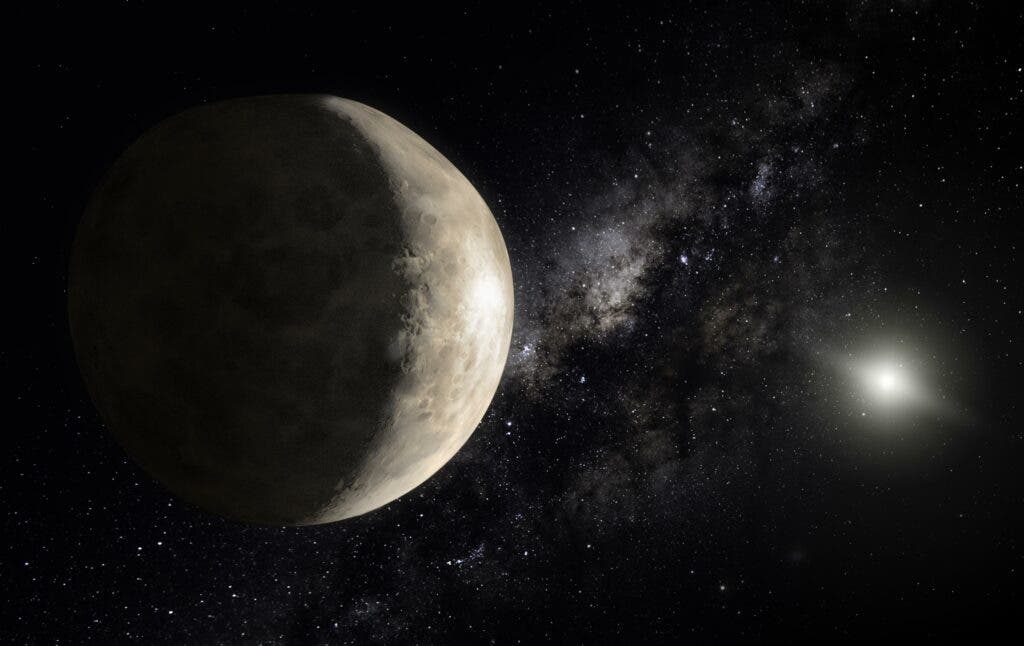New research from the National Science Foundation’s NOIRLab confirms: the most distant object in our Solar System is indeed “Farfarout”.

The name is not a typo. Back in 2018, the Subaru Telescope on Maunakea in Hawai’i discovered a stellar body moving through the solar system much farther away than anything ever seen before. We weren’t even able to determine how far, or where it was going, but we knew it was a long way away at the time. Based on its appearance (it was quite bright), the team assumed it was made of ice and probably around 250 miles (400 kilometers) in diameter, barely enough to be considered a dwarf planet.
In a bout of Internet humor that I can’t help but admire, they christened the body “Farfarout” and set to work on observing it further. We now have enough data to tell how far away it is and where it is going — Farfarout is now, appropriately, officially recognized by the International Astronomical Union as the farthest object in the Solar System.
A planet far far away
“At that time we did not know the object’s orbit as we only had the Subaru discovery observations over 24 hours, but it takes years of observations to get an object’s orbit around the Sun,” explained co-discoverer Scott Sheppard of the Carnegie Institution for Science.
“All we knew was that the object appeared to be very distant at the time of discovery.”
Together with David Tholen of the University of Hawai’i and Chad Trujillo of Northern Arizona University, Sheppard spent the last few years tracking the object with the Gemini North telescope (also on Maunakea in Hawai’i) and the Magellan Telescopes in Chile to determine where Farfarout was going.
Since then, they have been able to confirm that Farfarout is currently at around 132 AU (astronomical units) from the Sun, meaning it’s 132 times farther from our star than the Earth. Pluto, for comparison, sits at around 39 AU on average away from the Sun. This makes Farfarout the most remote object to ever be discovered in the Solar System, dethroning the previous record-holder, “Farout” (previously designated 2018 VG18). You won’t be surprised to hear that Farout was discovered and named by the same team.
As far as the orbit of Farfarout is concerned, the team explains that it is quite elongated, taking it from between 175 AU to 27 AU (bringing it closer to the Sun than Neptune). This weird shape for an orbit can offer some clues as to the history of Farfarout and the solar system at large.
“Farfarout was likely thrown into the outer Solar System by getting too close to Neptune in the distant past,” said Trujillo. “Farfarout will likely interact with Neptune again in the future since their orbits still intersect.”
The IAU’s Minor Planet Center in Massachusetts has announced that it will give Farfarout the provisional designation 2018 AG37. Its official christening will take place after we learn more about it and its properties, although I do think the current nickname should stick. It’s only appropriate.
Still, all things must pass and Farfarout’s title of farthest-out object in the solar system might well be one of them. The team remains confident that even more distant objects remain to be discovered.
“Farfarout takes a millennium to go around the Sun once,” said Tholen. “Because of this, it moves very slowly across the sky, requiring several years of observations to precisely determine its trajectory.”
“The discovery of Farfarout shows our increasing ability to map the outer Solar System and observe farther and farther towards the fringes of our Solar System,” said Sheppard. “Only with the advancements in the last few years of large digital cameras on very large telescopes has it been possible to efficiently discover very distant objects like Farfarout.”
“Even though some of these distant objects are quite large — the size of dwarf planets — they are very faint because of their extreme distances from the Sun. Farfarout is just the tip of the iceberg of objects in the very distant Solar System.”









